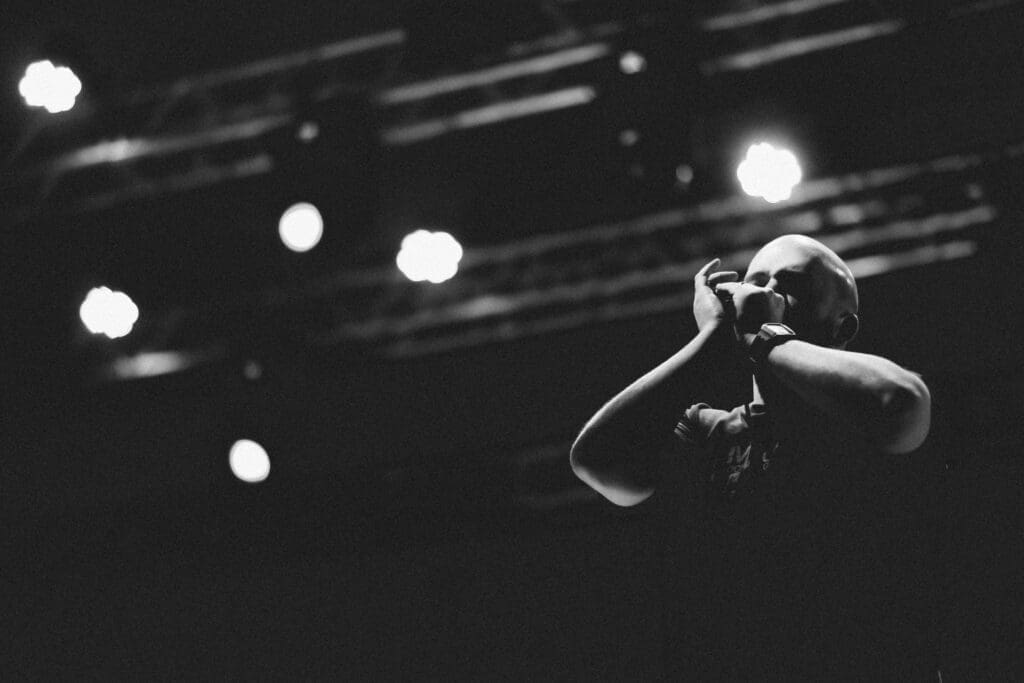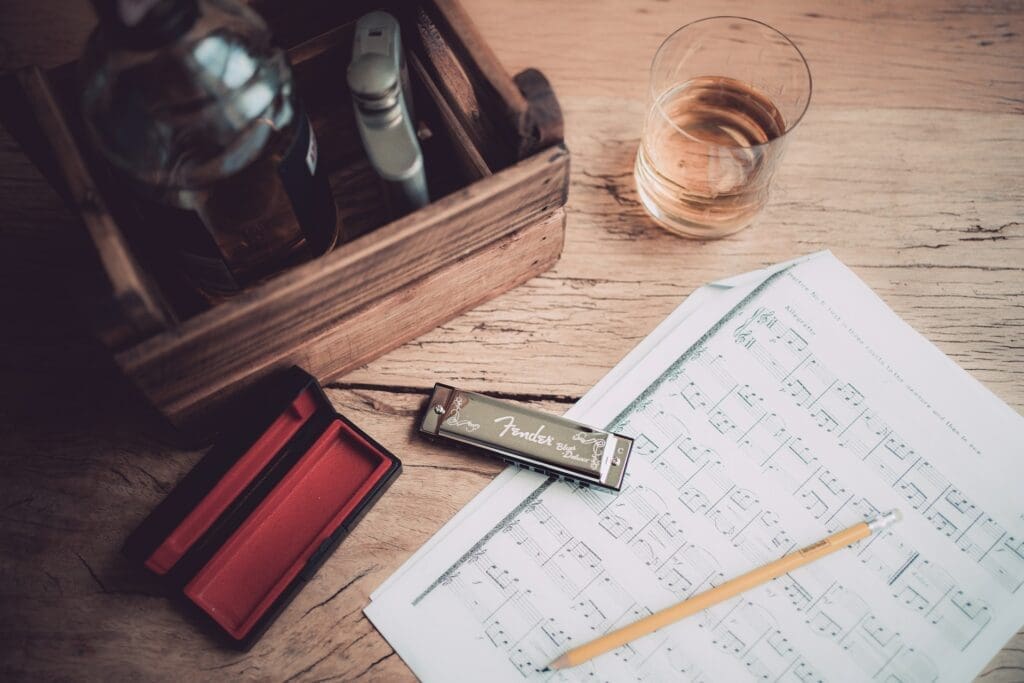The harmonica is an incredibly easy instrument to pick up and play, producing a unique sound that is suitable for many genres of music. Although it may not be used in all styles of music, it’s still an enjoyable instrument to learn and play. Let’s get started!
How the harmonica works
When you blow air into a harmonica, it causes the reeds inside to vibrate, producing sound. You can also produce sound by drawing air from the instrument. On a diatonic harmonica, you can play 19 different notes by blowing and drawing air.
Different kinds of Harmonicas:
Diatonic harmonica – this is the most common and simplest type of harmonica, making it a great starting point for beginners. It has 10 holes and is built to play a major, diatonic scale. You can also get different scales by “bending” notes or playing in different positions.
Chromatic harmonicas – they offer greater versatility than regular harmonicas due to the presence of a small button on the side. When pressed, this button causes the note being played to move up a half step, enabling players to play all notes in a chromatic scale. While this feature offers more options for playing, it can be more difficult to master – particularly when attempting to bend notes – and is therefore not recommended for blues music.
Tremolo and Octave Harmonicas – each has a double row of holes. Tremolo harmonicas have notes that are slightly apart yet almost the same, producing a vibrating effect. On the other hand, octave harmonicas have notes that are an octave (8 notes) apart, creating a fuller sound. While not as widely used as 12-string guitars, these harmonicas still offer an interesting and distinctive sound.
Some harmonicas come with special tunings, such as minor scales and scales that allow you to play in multiple keys. It’s best, to begin with, a diatonic harmonica in the key of C.
What harmonica is best for beginners?
Hohner is the most well-known brand of harmonicas, but there are plenty of other great options available. Lee Oskar is a great choice for beginners, as they are easy to play and sound good. Other quality brands include Hering, Suzuki, Seydel, Bushman and Huang. Explore these different brands to find the right harmonica for you.
How to hold the harmonica
When playing the harmonica, it is typically done with a two-handed grip. One hand holds the instrument while the other plays the notes. This technique can be used by both right- and left-handed individuals; if you are left-handed and find this difficult, try reversing your movements instead.
- To create a talking face with your left hand, place your thumb beneath the other fingers, which should be parallel and side by side.
- Secure the harmonica between your thumb and forefinger, placing it in between your fingers.
- Position your hands so that the tip of your left pinky is aligned with the top crease of your right pinky, and cup your right fingers over the left ones.
How to play harmonica
Blowing into the holes of a harmonica, from left to right, will produce the 1, 3, and 5 notes of a major chord (C, E and G in the key of C) repeated three times with an extra high C at the end. To play the harmonica properly requires a combination of blowing and inhaling (or drawing). For example, blowing into hole 4 on a C harmonica will produce a C note.
Inhaling afterwards will move it up to D. Blowing into hole 5 produces an E and inhaling makes an F. Hole 6 produces G when blown and A when drawn. However, in holes 2, 7 and 10 this pattern is reversed so that inhaling moves the note down instead of up.
The Pucker method – How to play harmonica
Many beginning harmonica players face a common issue: they think it’s easy enough and blow into their harmonica, only to hear three notes. To help with this, here is how to play just one note.
The Pucker method of playing the harmonica involves starting with your lips relaxed and then exhaling or inhaling to produce multiple notes. To get a single, clear note, push your lips outward as if you were trying to kiss someone. It may help to think of your lips as being over or around the harmonica rather than just on it; if you look silly without the harmonica in hand, you’re doing it correctly! Although this may be difficult at first, with practice it should become an effective technique.
Relax your mouth so that it covers multiple holes, and then use your tongue to cover the ones you don’t want. This technique is often used for “splitting” notes, allowing you to play two notes that are not directly next to each other by positioning your tongue in between them.
Easy harmonica songs to practice with:
Alouette
This is an ideal song to begin learning on the harmonica, as it is a French folk song that is relatively simple to master. Get tabs here.
Ode to Joy
At first, Beethoven’s composition may seem daunting, but it can be relatively straightforward to play on the harmonica due to its frequent repetition. Get tabs here.
When The Saints Go Marching In
I am delighted to let you know that even though you are a beginner when it comes to playing the harmonica, you can go beyond just practising nursery rhymes and folk songs. You can have a go at some of the classic rock and pop songs with simple chords and choruses, like this one. Get tabs here.
Jingle Bells
Add learning the harmonica rendition of a classic Christmas song to your holiday bucket list! It’s one of the easier songs to learn when you’re just starting out with playing the harmonica. Get tabs here.
Summary of how to play harmonica
With these simple steps, you can start playing the harmonica in no time. Have fun and enjoy the journey!











